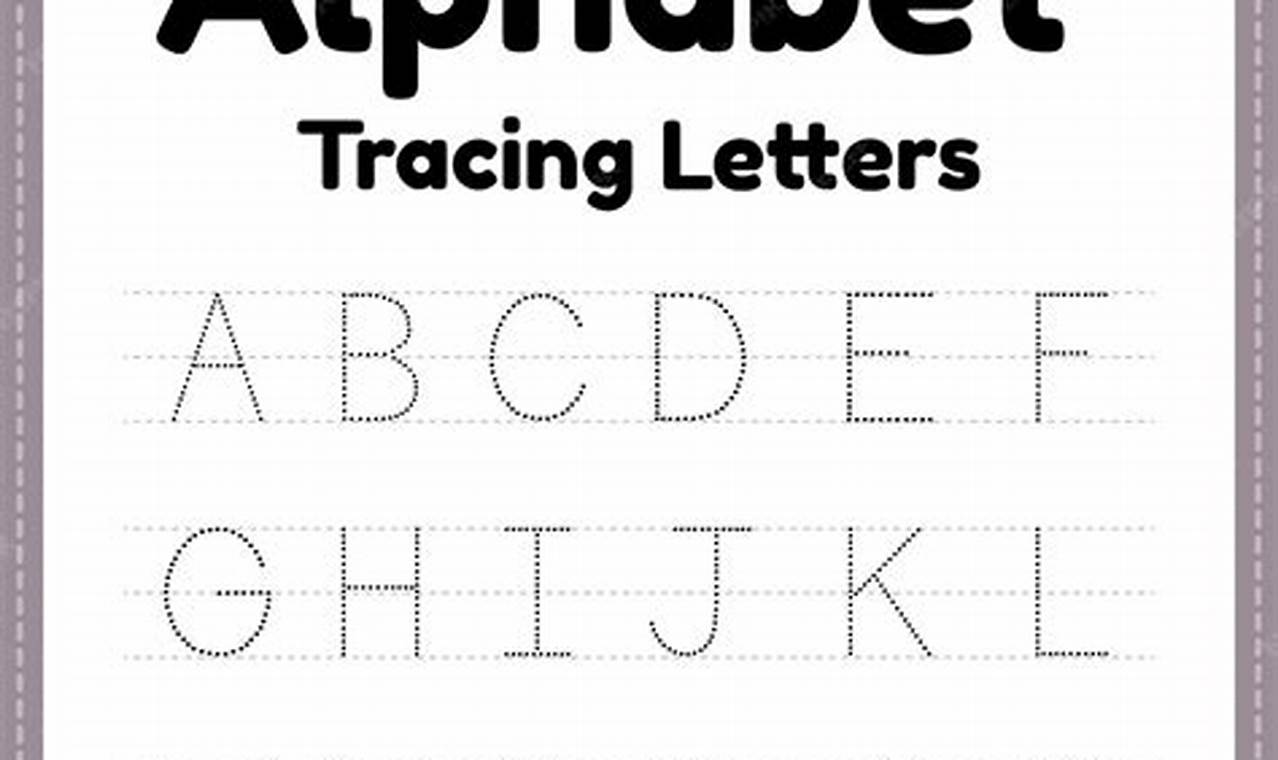Early handwriting skills are fundamental to a child’s academic success. Mastering the alphabet is a crucial step in learning to read and write. The use of structured tools like tracing worksheets helps children develop the necessary motor skills and letter recognition abilities to form a solid foundation for future literacy. Alphabet tracing fosters confidence and familiarity with each letter of the alphabet.
The primary benefit of alphabet tracing sheets lies in the development of fine motor skills. Children learn to control their hand movements and pencil grip, essential for neat and legible handwriting. These worksheets also improve letter recognition as children repeatedly trace each letter, associating its shape with its name. Furthermore, the structured nature of tracing helps in understanding the proper formation of letters and builds a strong connection between visual perception and motor execution.
These alphabet tracing sheets typically contain both uppercase and lowercase letters presented in a clear, easy-to-follow format. Each letter is outlined with dotted or dashed lines, providing a visual guide for children to trace. Ample space is usually provided for practice, allowing children to repeatedly trace each letter. Some sheets may include visual cues, such as arrows, indicating the correct stroke order for each letter, enhancing the learning experience. The goal is to make the activity fun and engaging with friendly illustrations.
To use the alphabet tracing sheets effectively, start by selecting a comfortable and well-lit workspace. Encourage children to use a thick pencil or crayon that is easy to grip. Begin by guiding them to trace along the dotted lines, emphasizing the importance of staying within the boundaries. Encourage children to say the letter name aloud while tracing it. If a child struggles with a particular letter, provide gentle guidance and positive reinforcement. Break the task into smaller, manageable sessions to avoid frustration.
To further reinforce letter recognition and handwriting skills, consider incorporating other learning resources. Explore related worksheets on Kidtraces.com that focus on letter sounds, word formation, or sentence construction. Educational apps and games that reinforce alphabet recognition can also be beneficial. Daily activities, such as writing letters in sand or using playdough to form letters, can make learning fun and engaging. Reading aloud and pointing out letters in books can further solidify letter recognition.
Alphabet tracing sheets are a valuable tool for developing essential handwriting skills in young children. They provide a structured and engaging way to learn letter formation and improve fine motor control. Download these free alphabet tracing sheets from Kidtraces.com and empower children to develop a strong foundation for literacy. Remember to explore the many other free worksheets on Kidtraces.com to support continuous learning and skill development.
